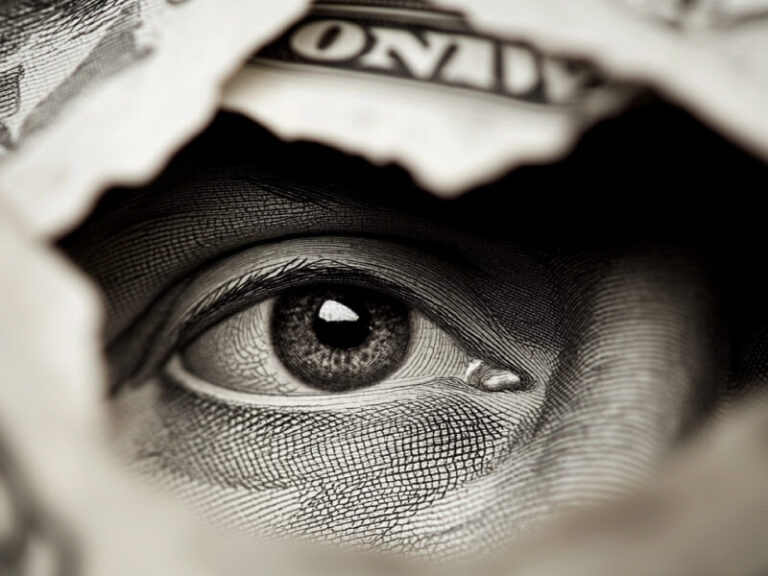The Triple Bottom Line (TBL) concept has gained relevance in the modern business world. John Elkington coined the term in 1994.
It encourages companies to consider their financial gains and broader impact on society and the environment.
The Brundtland Report inspired him and highlighted the need for a more integrated approach to sustainable development.
Elkington’s previous work on “environmental excellence” and “green consumerism” helped establish the triple-bottom-line concept.
This holistic approach revolves around the three Ps: People, Planet, and Profit.
Though the triple bottom line concept is over 30 years old, it remains relevant in today’s rapidly changing sustainability landscape.
Even though sustainability is a small sector compared to other areas, the sustainability market is poised for significant growth.
Let’s explore these pillars and their influence on the modern business landscape.
What Is the Triple Bottom Line?
The Triple Bottom Line (TBL) is a framework that broadens a business’s focus on the financial bottom line, including social and environmental considerations.
It challenges companies to go beyond the traditional notion of profit as the sole measure of success and consider the impacts of their operations on people and the planet.
Why Is the Triple Bottom Line Important?
The Triple Bottom Line is important because it encourages sustainable business practices that benefit the company, the community, and the environment.
By adopting the TBL approach, businesses can foster long-term growth, enhance their brand reputation, and contribute to a healthier, more equitable world.
The First P: People
How Do Businesses Impact People?
The “People” aspect of the Triple Bottom Line emphasizes businesses’ social responsibility. This includes how a company treats its employees, customers, suppliers, and the community.
A business that values its people’s well-being often sees benefits such as increased employee satisfaction, customer loyalty, and a more substantial community presence.
What Are the Key Social Responsibilities of a Business?
- Fair Labour Practices: Ensuring all employees are treated fairly, paid a living wage, and work safely.
- Community Engagement: Actively participating in and contributing to the local community through charity, sponsorship, or other forms of support.
- Diversity and Inclusion: Promoting a diverse, inclusive workplace that values different perspectives and backgrounds.
- Customer Relations: Building robust and trust-based customer relationships by providing high-quality products and services and maintaining ethical business practices.
The Second P: Planet
What Does Environmental Responsibility Look Like?
The “Planet” aspect of the Triple Bottom Line focuses on environmental sustainability. Businesses significantly impact the environment, and they must minimize this impact by adopting eco-friendly practices.
How Can Businesses Reduce Their Environmental Footprint?
- Sustainable Resource Use: Utilizing renewable resources reduces waste and minimizes energy consumption.
- Waste Management: Implementing recycling programs, reducing packaging, and managing waste responsibly.
- Carbon Footprint Reduction: Taking steps to reduce carbon emissions through energy efficiency, renewable energy sources, and carbon offset programs.
- Sustainable Sourcing: Choosing suppliers that adhere to sustainable practices ensures that products are sourced ethically and sustainably.
The Third P: Profit
While the Triple Bottom Line emphasizes social and environmental responsibility, financial viability remains crucial like every other business.
Profit ensures that a company can continue to operate, invest in new initiatives, and provide returns to its shareholders.
How Can Businesses Balance Profit with Social and Environmental Goals?
- Sustainable Business Models: Developing profitable business models while considering social and environmental impacts.
- Long-Term Growth: Focusing on long-term strategies rather than short-term gains, ensuring sustainable success.
- Ethical Investing: Attracting investors who value sustainability and are interested in supporting businesses that align with their values.
Examples of Profitable, Sustainable Businesses
AgStar is a prime example of a company successfully balancing profit with sustainability.
Their sustainable plan has helped them reduce their environmental footprint while achieving financial growth.
Another example is Tesla, which has disrupted the automotive industry by making electric vehicles profitable and desirable.
How Do the 3 P’s Interconnect?
The beauty of the Triple Bottom Line lies in its interconnectedness.
The three P’s are not independent silos but rather influence and reinforce each other.
For instance, a business that invests in its people often sees increased productivity and innovation, leading to higher profits.
Similarly, environmentally sustainable practices can reduce costs in the long run and enhance brand reputation, driving customer loyalty and profit.
Challenges in Implementing the Triple Bottom Line
What Are the Common Obstacles?
- Cost: Implementing sustainable practices can require significant upfront investment, which may be a barrier for some businesses.
- Measurement: Quantifying social and environmental impact can be challenging, making it difficult to track progress and make informed decisions.
- Balancing Act: Striking the right balance between people, planet, and profit can be difficult, especially when these goals seem to conflict.
How Can Businesses Overcome These Challenges?
- Innovative Solutions: Adopting new technologies and innovative business models that reduce costs while enhancing sustainability.
- Collaboration: Working with other businesses, NGOs, and governments to share knowledge, resources, and best practices.
- Transparent Reporting: Implementing clear and transparent reporting mechanisms to measure and communicate progress on TBL goals.
The Future of the Triple Bottom Line
How Will TBL Shape the Future of Business?
As the world becomes more interconnected and the impacts of climate change, social inequality, and resource scarcity become more apparent, the Triple Bottom Line will become even more critical.
Businesses that adopt TBL practices will be better positioned to navigate these challenges and thrive in the future.
What Role Does Technology Play?
Technology will play a significant role in advancing the Triple Bottom Line.
Innovations in renewable energy, waste management, and digital tools for measuring impact will make it easier for businesses to adopt sustainable practices.
How Can Consumers Support the Triple Bottom Line?
Consumers have a decisive role in promoting the Triple Bottom Line.
By choosing to support businesses that prioritize people, planet, and profit, consumers can drive demand for more sustainable products and practices. This consumer-driven change can encourage more companies to adopt the TBL framework.
Tips for Conscious Consumerism
- Research Brands: Research a brand’s commitment to sustainability and ethical practices before purchasing.
- Choose Sustainable Products: Opt for products that are made sustainably, have a minimal environmental impact, and support fair labour practices.
- Support Local Businesses: Support businesses that contribute positively to the community and environment whenever possible.
- Advocate for Change: Use your voice to advocate for more sustainable business practices, whether through social media, petitions, or direct communication with companies.
Conclusion
The Triple Bottom Line is more than just a business strategy; it’s a philosophy that recognizes the interconnectedness of economic success, social responsibility, and environmental stewardship.
The Triple Bottom Line (also known as TBL or 3BL) measures an organization’s actual economic impact by assessing and measuring its performance in three key areas.
By embracing the three Ps (people, Planet, and Profit), businesses can achieve long-term financial success and contribute positively to the world.
As consumers, employees, and business leaders, we all have a role in advancing the Triple Bottom Line.
Whether by supporting sustainable businesses, advocating for change, or implementing TBL practices in our organizations, we can help create a more sustainable and equitable future.
FAQs
1. What are some examples of businesses successfully implementing the Triple Bottom Line?
AgStar PLC and Tesla are all examples of companies that have successfully implemented the TBL framework and balanced social, environmental, and financial goals.
2. How can small businesses adopt the Triple Bottom Line?
Small businesses can start by making incremental changes, such as reducing waste, sourcing sustainably, and engaging with the local community. Over time, these small steps can lead to significant impact.
3. Is the Triple Bottom Line suitable for all industries?
Yes, the TBL framework can be applied across industries, though the specific strategies may vary depending on the business’s nature and impact on society and the environment.
4. What are the benefits of adopting the Triple Bottom Line?
Benefits include enhanced brand reputation, increased customer loyalty, long-term profitability, and a positive impact on society and the environment.
5. How does the Triple Bottom Line relate to Corporate Social Responsibility (CSR)?
The TBL framework is closely related to CSR. Still, while CSR focuses on a company’s responsibility to society, the Triple Bottom Line expands this to include environmental and financial considerations, creating a more holistic approach.
Further Reading:
- “Cannibals with Forks: The Triple Bottom Line of 21st Century Business” by John Elkington
- “25 Years Ago I Coined the Phrase “Triple Bottom Line.” Here’s Why It’s Time to Rethink It.” by John Elkington
- “Cradle to Cradle: Remaking the Way We Make Things” by William McDonough and Michael Braungart
- “The Responsible Company” by Yvon Chouinard and Vincent Stanley
- “Green to Gold: How Smart Companies Use Environmental Strategy to Innovate, Create Value, and Build Competitive Advantage” by Daniel C. Esty and Andrew S. Winston









